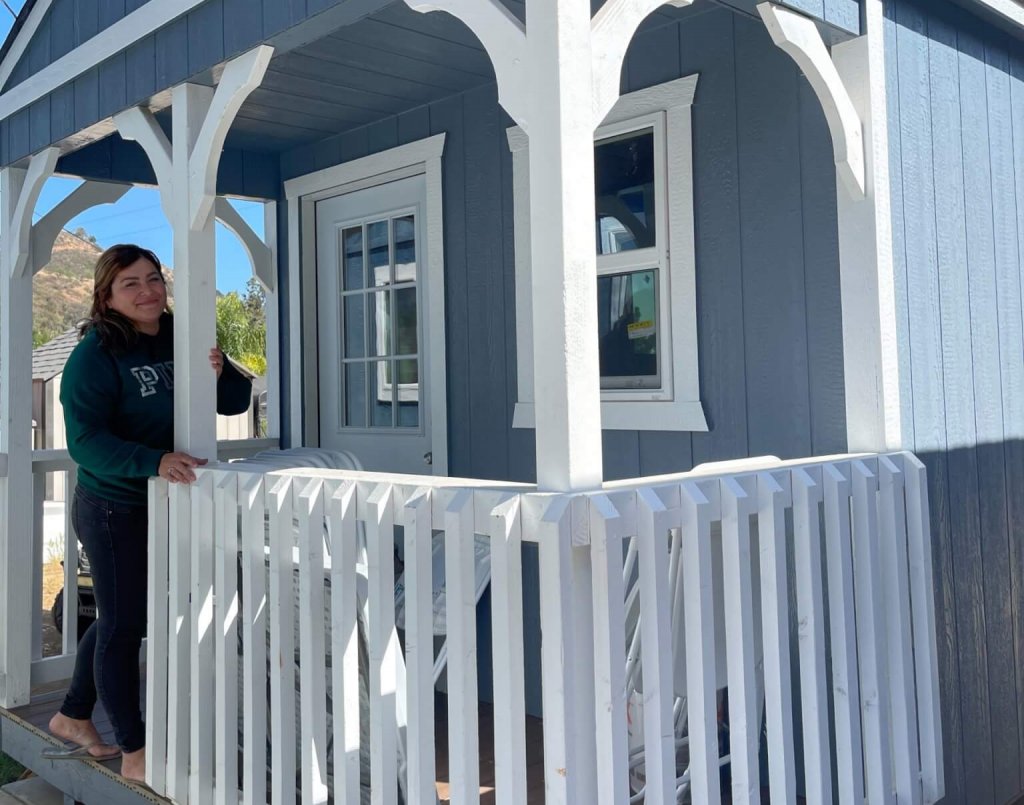As a high school sophomore, Rocio “Rosie” Villanueva watched from her school desk in horror as the World Trade Center’s twin towers fell on 9/11. At just 15 years old, she was new to the country. She moved from Mexico to Escondido, California, only a few months earlier.
“I had never seen that before,” Villanueva said. “Having come from a small farm in Mexico and living in poverty, I had never really heard about terrorism.”
As months passed, she couldn’t stop thinking about how she could help serve her new country. Media coverage about the War on Terror drew her in, and she dreamt of being the first person in her family to serve in the U.S. military.
“I thought maybe I could help,” Villanueva said. “If they need me, why not? I felt like I could do something. Whatever they needed, I was willing to do.”
She walked into her local Army recruiting station when she was only 17, but her parents weren’t ready for her to go to war. They begged her to try college instead, insisting she was too young to be in the Army. She attended classes for one semester before officially enlisting in the Army in 2005 to become a bridge crewmember and combat engineer. In 2006, she deployed with the 50th Engineering Company, Multi Role Bridge Company to Iraq.
“My drill sergeant told me, you guys are going to go straight to Iraq, and you’re going to meet your unit over there,” Villanueva said. “They just kind of like prepared us. I was ready, but I didn’t want to tell my parents, so I didn’t even tell them I was going to go to war right away.”
She served three years on active duty and spent another five in the Army Reserve, working her way up to specialist. Meanwhile, she struggled with the complications of a traumatic brain injury from an incident that occurred while she was in Iraq.
RELATED: Hope For The Warriors helps retired Iowa National Guardsman continue serving
“It was hard for me because I had a lot of confusion and headaches,” said Villanueva, who noted she wasn’t able to memorize the words of a creed while trying for another promotion. “That’s when I knew I wasn’t going to be able to continue being in the military.”
Once separated from the Army, memories of what she saw and experienced in Iraq haunted her. The moments involving the children who lived in her deployment zone were stuck in her head.
“I had to follow my orders, and sometimes I made decisions that emotionally didn’t feel right,” she said. “I didn’t know how to deal with it because I knew I had a job to do, and because of the decisions I had to make, it also depended if we were coming home alive, me and all the people I was serving with, my brothers and sisters.”
Finding art therapy
Meanwhile, she couldn’t shake her desire to help others. She tried going back to college for nursing. However, cognitive challenges made the biology courses seem impossible.
“I feel like my life pretty much ended,” she said. “I had no education, really.”
When she turned to Veterans Affairs for help with post-traumatic stress disorder, she stumbled upon an art therapy program that changed everything.
“I noticed that every time I do something with my hands, I feel relief. I feel like I can let go,” Villanueva said. “I can put something in a piece that sometimes I can’t describe with my words.”
Her quest to serve others has led her to travel to Baja, Mexico, where she teaches art to children at the Rancho la Hermosa Orphanage.
“Most of the kids there really struggle,” she said. “I see how they smile when they’re working with their hands, and that’s the same thing that happens to me when I’m working with the clay.”
While the kids at the orphanage molded pieces of clay into piggy banks and assorted dishes, Villanueva dreamt of having a space and kiln for their projects.
Warrior’s Wish
When she learned about Hope For The Warriors, a nonprofit that supports service members, veterans and military families she discovered the Warrior’s Wish Program. The operation aims to improve the quality of life for those who have physical and psychological wounds from their time in service. Since 2006, the Warrior’s Wish Program has provided more than $1 million in funding to veterans and their families, granting a total of 226 wishes.
Villanueva applied for the program and was granted her wish for a backyard art shed.
“Reading Rosie’s wish and the essay that she had submitted about how important art therapy has been to her and her healing was just really impactful,” said Brianne Sampson, director of clinical support services for Hope For The Warriors.
“Going outside, I still can’t believe this is my shed,” said Villanueva. “I’m really grateful for everything they’re doing, what they’ve done for me and what they’re continuing to do for all of the veterans. It has turned out just amazing, and I feel it’s a blessing.”
For Villanueva, the art shed is just the beginning of a new journey. Now a married mother of four, she plans to return to school and get an associate’s degree in ceramics to pursue her dream of helping others with a medium that’s enhanced her own healing journey.
“Clay has memories, kind of like us,” she said. “When you’re working with it, if you do something to the clay that is not right, it will eventually crack or break. I find that because clay is so much like us, it helps us to be good in the future, try our best, and never give up if anything doesn’t turn out the way we wanted. We can always try to do better.”

